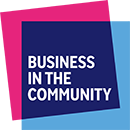Circular Procurement
How procurement can be used as a lever to accelerate the adoption of the circular economy
This Circular Procurement toolkit outlines how businesses can redesign their procurement processes for greater ‘circularity’. This means maximising the value of products and materials while in use and recovering and repurposing them at the end of their lives, eliminating waste. By changing the way products are bought and used every business can reduce their use of energy and raw materials, cutting their carbon emissions.
This toolkit contains six simple steps for any business beginning their circular procurement journey.
- Define your circular ambitions.
- Determine your functional needs.
- Formulate your questions and communicate with the market.
- Choose your supplier(s) and award the contract.
- Implement circular usage policies.
- Evaluate success.
What is circular procurement and why is it important?
Circular procurement focuses on closing energy and material loops within supply chains. This is achieved by remanufacturing or reusing resources. It creates long-term value by focusing not just on single transactions, but on the relationships between clients and suppliers. The lifecycle of of a product throughout the whole value chain is assessed to enable circular procurement. This contributes to sustainable procurement e.g. reducing resource use would, in turn, reduce Greenhouse Gas emissions1.
The circular economy
The traditional model of production and consumption is a linear one. It moves in a straight line from production to consumption to disposal. However with increased awareness of limited resources and climate change concerns, the need for sustainability in all areas of business has become more important. The circular economy offers an alternative way of using resources to a linear economy. Resources are designed for longer lifetimes, repair, re-use and reprocessing. We need to redesign how resources are used to achieve a zero-carbon economy.
Read BITC’s Circular Office Guide to learn how to retain the value of materials, keeping them in circulation and eliminating waste in the workplace. This guide draws on the expertise of Business in the Community’s
(BITC’s) Circular Economy Taskforce, and experiences from a range of organisations.
Find out more about BITC’s Environment agenda.
About ProCirc
Business in the Community (BITC) is a partner in the ProCirc project. This is an EU initiative from Interreg, to fund and test circular economy pilots and procurement practices to tackle the issue of raw material usage, waste, and CO2 emissions. BITC has received Interreg funding to support businesses to adopt circular procurement principles and upscale the impact of ProCirc through resources such as this Circular Procurement Toolkit.
LEARN MORE
Business in the Community is innovating to sustain and repair our planet.
related content
- Business in the Community (2020) Addressing emissions in your supply chain, available at https://www.bitc.org.uk/
